The Venn diagram describing the readership of 35mmc and of Mike Johnston’s blog ‘The Online Photographer’, may not have a huge amount of overlap—on the other hand it may, I don’t have the data. For those of you not familiar with Mike’s blog you may not know that in 2009 he set his class of eager followers an exercise. The premise is described in an article entitled ‘The Leica as Teacher’ and developed in a further article ‘Why it has to be a Leica’. Put succinctly, it challenges you (the aspiring photographer) to shoot a Leica rangefinder, with one lens and one type of black and white film exclusively for a year. You should aim to shoot two to six rolls of film per week and make one to six work prints per roll, without cropping. Every five to ten rolls make one nice print, again without cropping. The idea was that a year of doing this would radically improve your photographic ability.
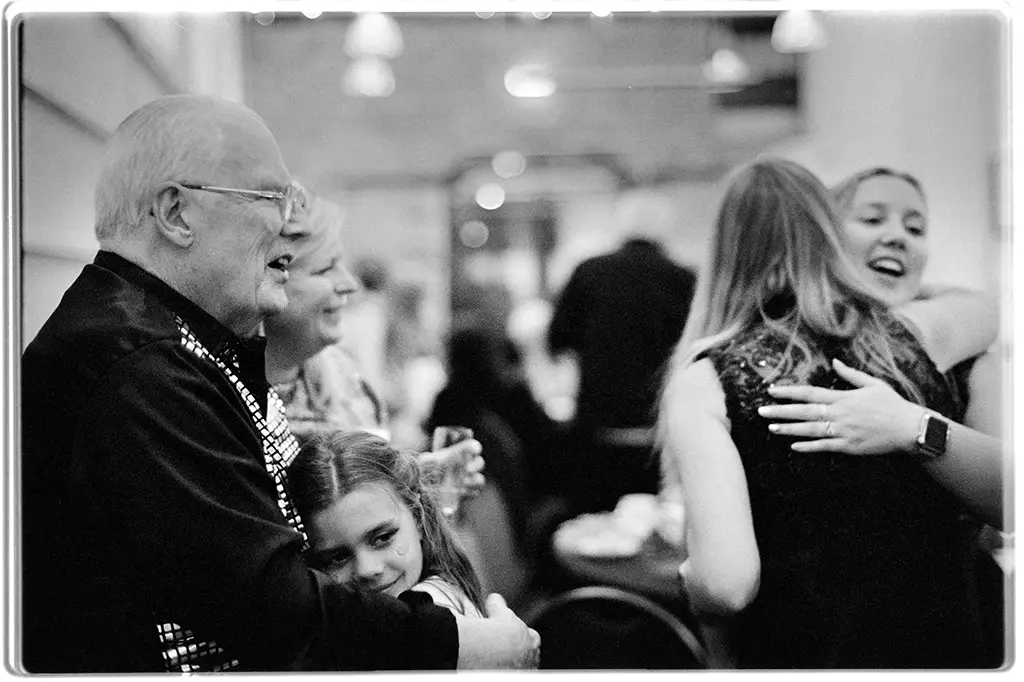
I read the article with interest and then, like 99.97% of the readers, did not complete the exercise. However, the idea knocked around in my head and never quite left me, time passed and I accrued more and more cameras—some film, some digital and more and more negatives and digital files sat in folders and on hard drives but without any coherent idea of what I was doing or why. The appeal of simplifying things and following Mike’s minimalist approach grew and grew—I decided to take up the challenge.
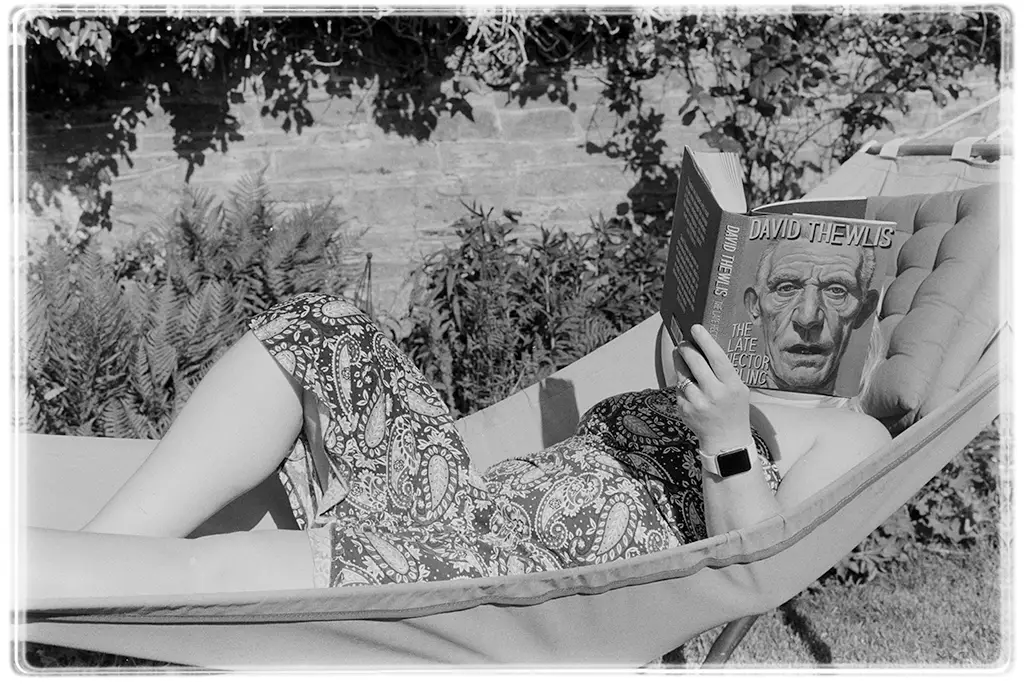
Shopping is not the same thing as photography
In order to begin I needed a Leica. No problem there, I had a Leica—an M5 which was my grandfather’s and which I had used on and off for years. Attached to it was the tiny Leitz 35mm f/1.4 Summilux. A perfect set up for such a project, there was only one problem—using that camera would not involve any shopping. Shopping is not the same hobby as photography, but most of us (myself especially included) forget that simple truth nearly all of the time. Like the rest of the 35mmc readership I too had absorbed the endless online opinions criticising the M5—the big, ugly, haptically awful monster that the 1970s spawned. Compare this horror to the Leica M3—the meisterstück, the initial prelapsarian Leica, a paradise of camera design from whence we have fallen and can never return. That’s right, I wanted an M3. A good deal of agonising and eBay scrolling later I owned one. Was this foolish?—yes, do I regret it?—probably not, but it is ironic that an exercise designed to stop endless gear acquisition and focus you on the practice of photography sent me scurrying straight to eBay.
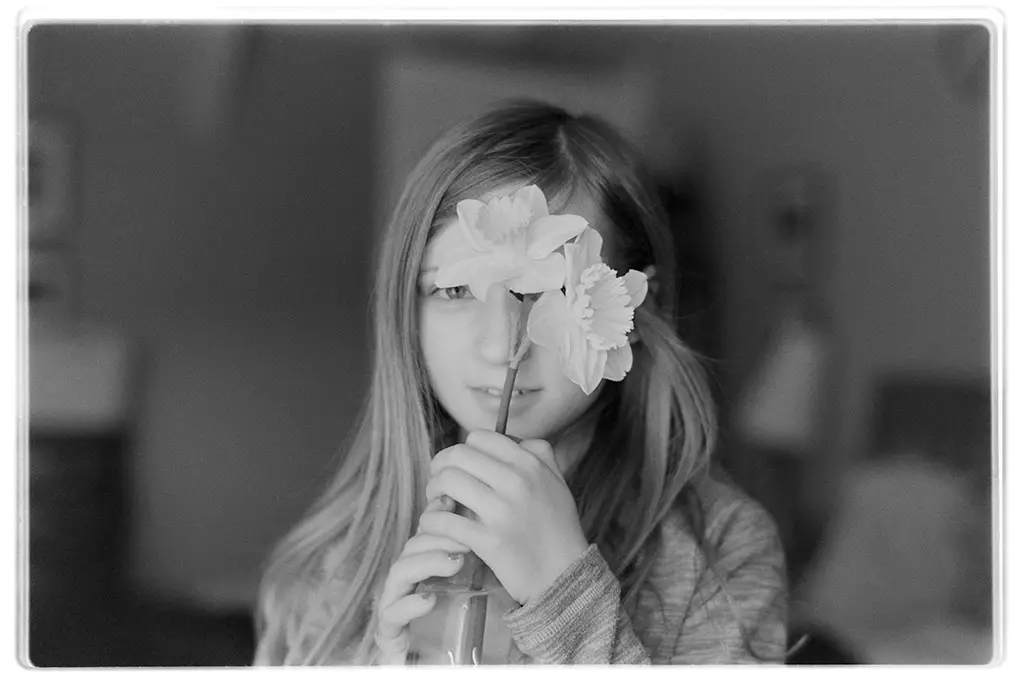
I won’t dwell on the merits of the M3 or make comparisons to the M5 here, this is covered in depth elsewhere. Suffice it to say the M3 is a different camera in the hand to an M5 and is very usable. It also does not have a light meter, but that’s ok because there are many apps for your phone that will provide this service for you and in many ways that actually speeds things up; arrive somewhere, take a light reading, set the camera up and shoot. As long as the light isn’t rapidly changing you’ll be fine and it’s one less thing to think about before you press the shutter each time. The ‘home’ focal length for the M3 is 50mm, a focal length I like very much and am very familiar with, but not one I owned in an M mount form; a brief trip to Red Dot Cameras sorted that and I left with a Zeiss 50mm f/1.5 Sonnar—well known to be a favourite of Hamish’s. Having equipped myself with a bulk loader and one hundred feet of Ilford Delta 400 I was ready to begin.
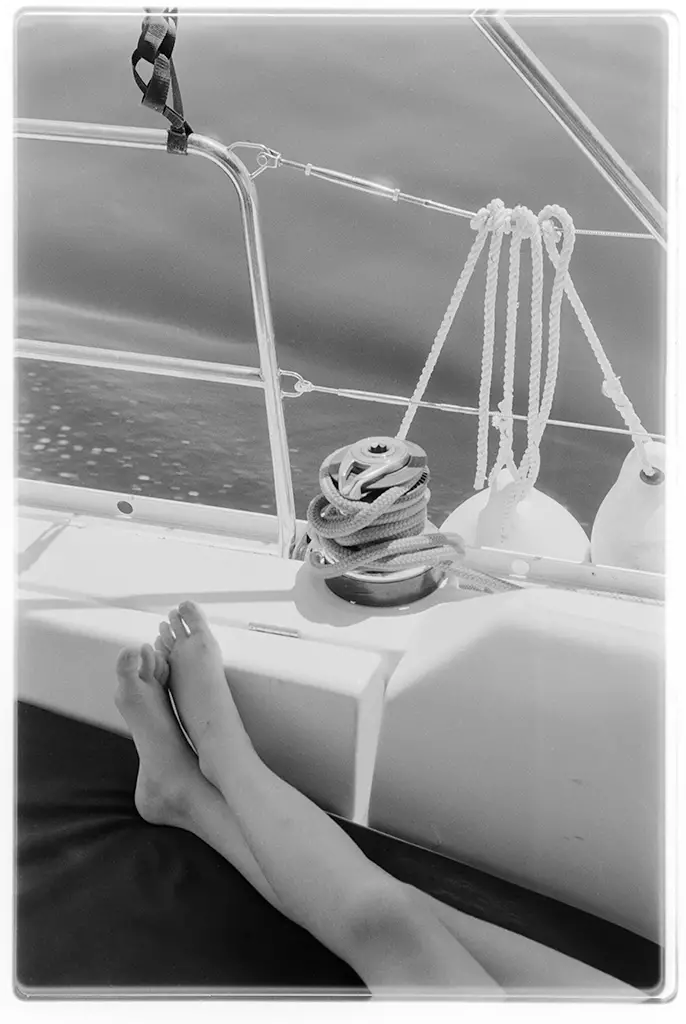
The experience
I began the project on my birthday, it seemed like an easy date to remember and starting it with my new M3 felt like a birthday present to myself. As always with any new bit of kit there is an initial excitement as you get to try it out that drives a lot of picture taking at the early stages—I was having fun. The strict rules of the project require you to carry the camera with you all day, everyday. This is not feasible in my job (nor I suspect most other people’s, unless your job is an as an aspiring photographer), but I did try to take the camera with me whenever I went somewhere and it certainly covered a lot of ground in the year—at least until the project clashed with the covid lockdown that descended on us two-thirds of the way through.
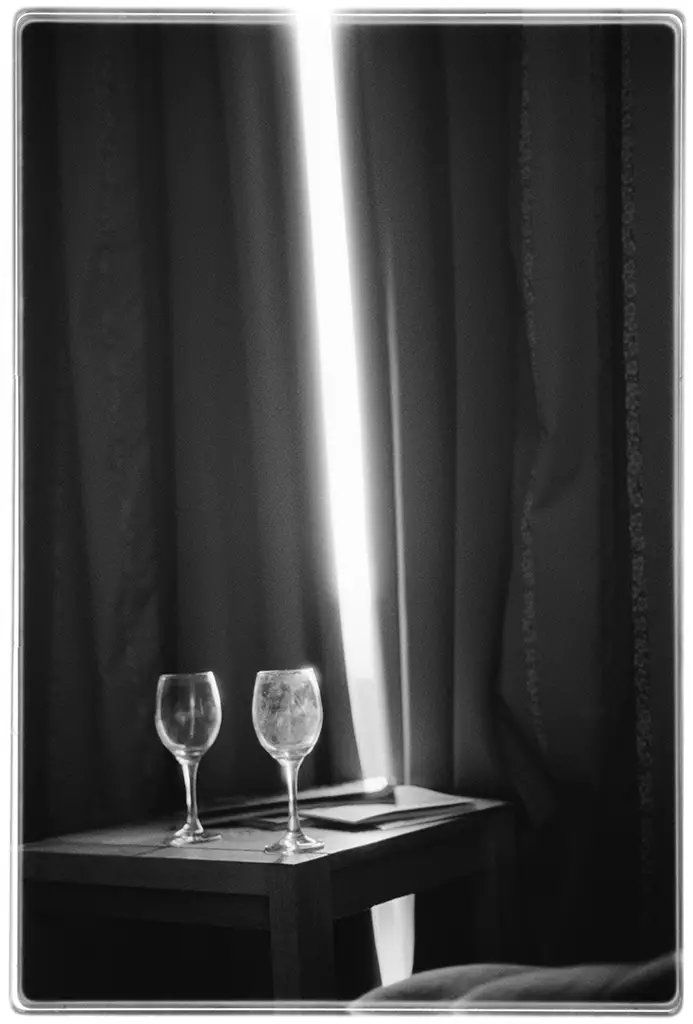
The first pleasurable thing to note was that, for someone as indecisive as me, having the choice of which camera to use taken from you was very liberating. I didn’t have to think, I just picked it up, pocketed a couple of rolls of film and walked out of the door. It became second nature to have it sitting on my hip as I walked. The aim of the exercise is to get you to see as the camera sees, so that when you raise it to your eye the picture you’ve already composed in your head is there, right in front of you, already framed in the viewfinder—all you have to do now is focus and shoot (you will recall that you set the exposure at the point you walked out of the door). It is also a blessed relief for your back as one camera, one lens and two rolls of film don’t require you to drag along a camera bag full of gear.
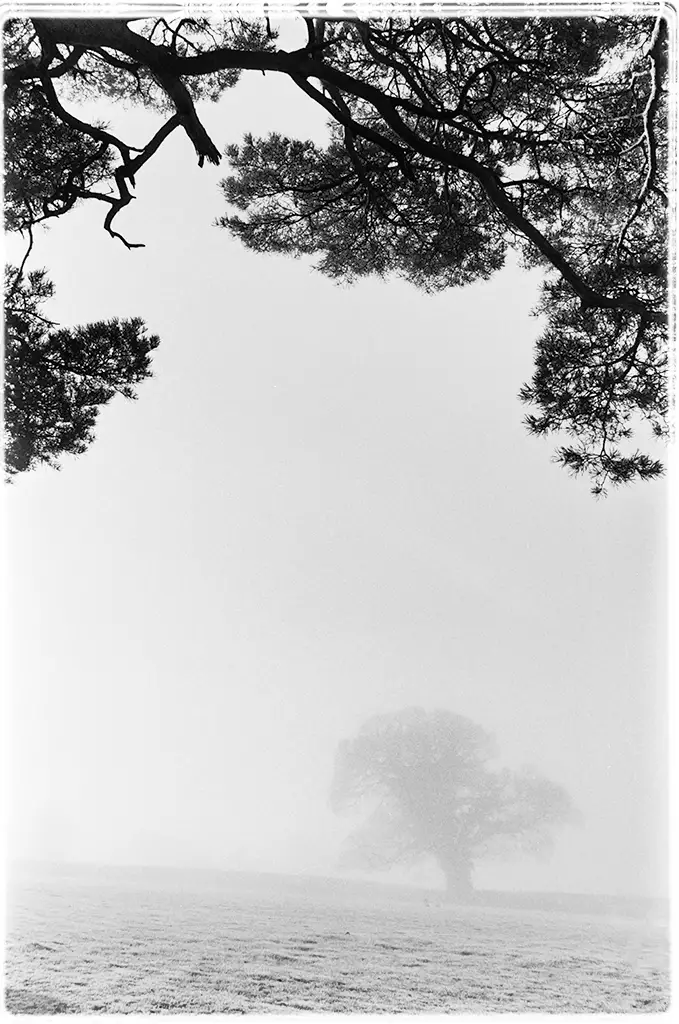
Great photographs don’t have bokeh balls
The reason it needs to be a Leica is that the viewfinder experience is not engaging, there is no getting lost in the beauty of shallow depth of field effects in an SLR viewfinder and no standing back to admire the ground glass of your Hasselblad or field camera. The focus remains on the scene in front of you. The temptation to improve bad pictures by resorting to extreme depth of field effects is gone, as the effect cannot be judged through the viewfinder. You’ll find that depth of field catches you out at times when pictures taken at wider apertures suffer from loss of sharpness in a critical element, and you’ll find that you start to favour mid-range apertures (light levels permitting) to get most of that composition in focus. This is all to the good—the great pictures, the photographs that endure, are all about the subject rendered well and not about the optical peculiarities of the way a lens sees the world. That’s not to say you won’t get bokeh balls because when you come to shoot in artificial light and are limited to ISO 400 your lens is going to be wide open, you’re just not going to be aware of them through the viewfinder.
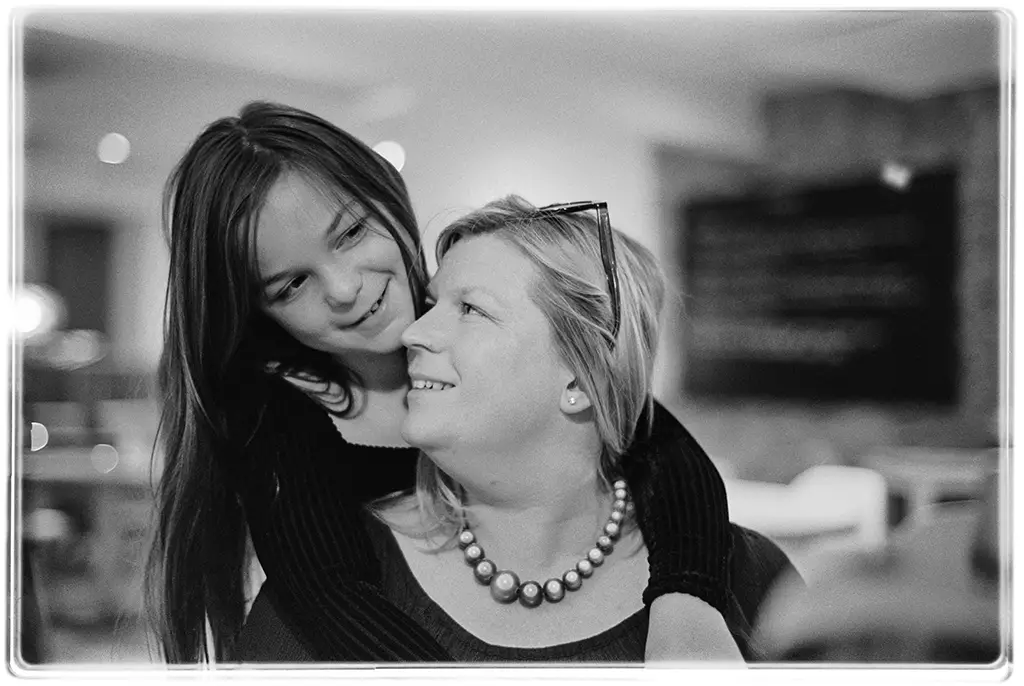
The second reason it has to be a Leica (and in my case a fully manual Leica with no meter) is that it gets out of your way. I have a Fuji X-E1 which I sometimes use and it produces very nice images, but it has a maddening habit of changing settings accidentally and seemingly randomly at the drop of a hat. There is a button on that camera which engages a macro mode. I don’t know what the macro mode does, as pressing that button doesn’t put a macro lens on the camera or move you closer to the subject, but what it does do is place a large pictogram of a flower in the middle of your viewfinder, obscuring your view, when you accidentally press it—this is not a camera that gets out of your way. The manual, mechanical, film Leica by contrast will let you make as many mistakes as you like and won’t raise a finger to stop you, but it will let you release the shutter whenever you want and that is the skill you are trying to learn here.
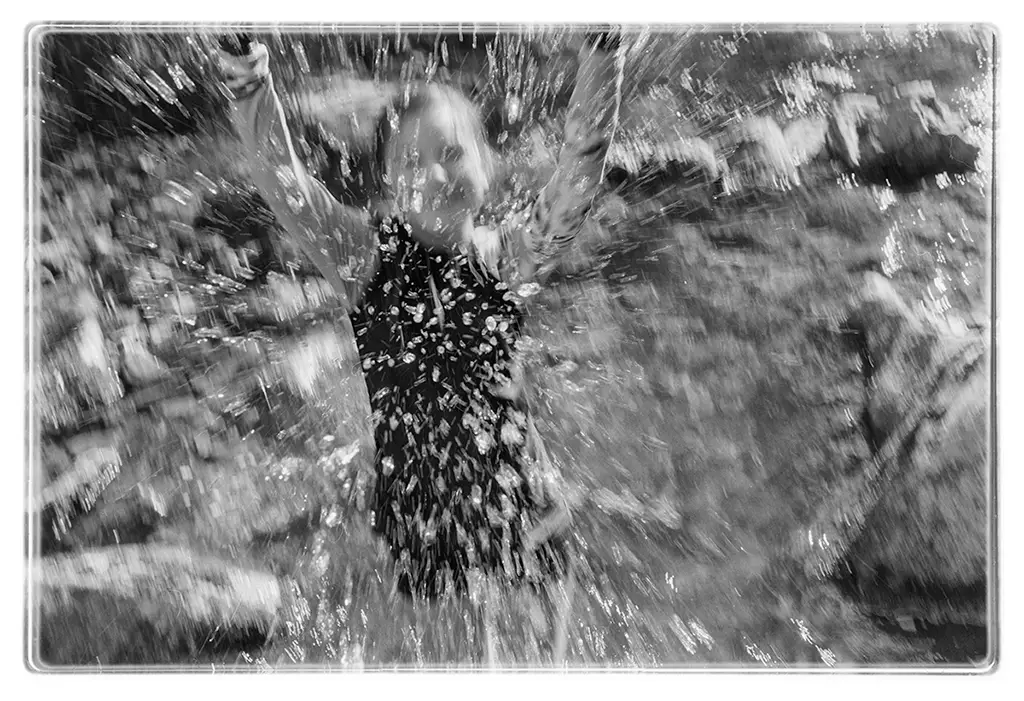
The aim of the game is to arrange the frame
You are not allowed to crop, you need to get the composition correct in camera. I’m no purist about cropping, long having taken the view that not all scenes correspond to a 3:2 (or whatever) aspect ratio and you should change the crop to suit the subject. However, once you’ve mastered the basics of exposure and focus all photography comes down to composition. The aim of the game is to arrange the frame and as a learning exercise (which is what this is) this is valuable. Once or twice I was tempted to crop (mainly to straighten horizons) but the vast majority of the time I took what the camera gave me and lived with it. This also helped with my tendency towards perfectionism.
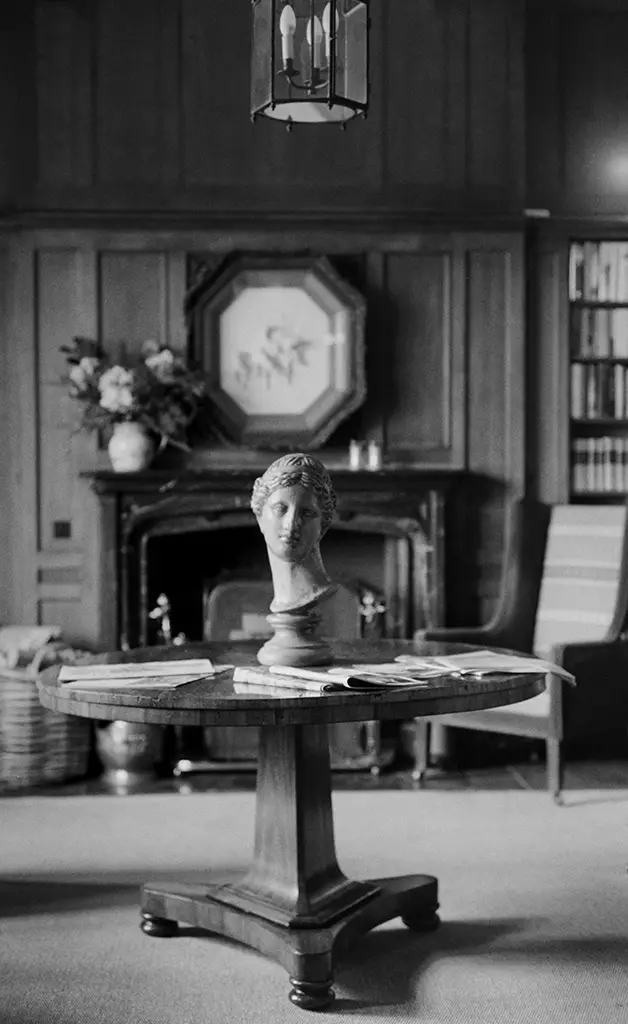
Producing prints
In the course of the year I exposed 88 rolls of film (mostly Delta 400 but I did allow myself to switch to FP4 plus when travelling to the bright luminosity of Greece, and a couple of rolls of Delta 3200 snuck in during times of available darkness). This is a total of just over 3000 frames and, averaging out at 1.7 rolls a week, this is below the specified target (and certainly not a Garry Winogrand level of productivity), but reasonable for someone with a full time job to do at the same time. I made 364 work prints, Mike allowed one to six prints per roll which is a 2-17% print rate. Mine comes in a 11.5% which is in the right ballpark therefore. This exercise took place before my darkroom was up and running so I digitised the negatives using a DLSR and printed on the Epson, but (nearly always!) without cropping and making all prints at 9×6 inches on A4 paper.
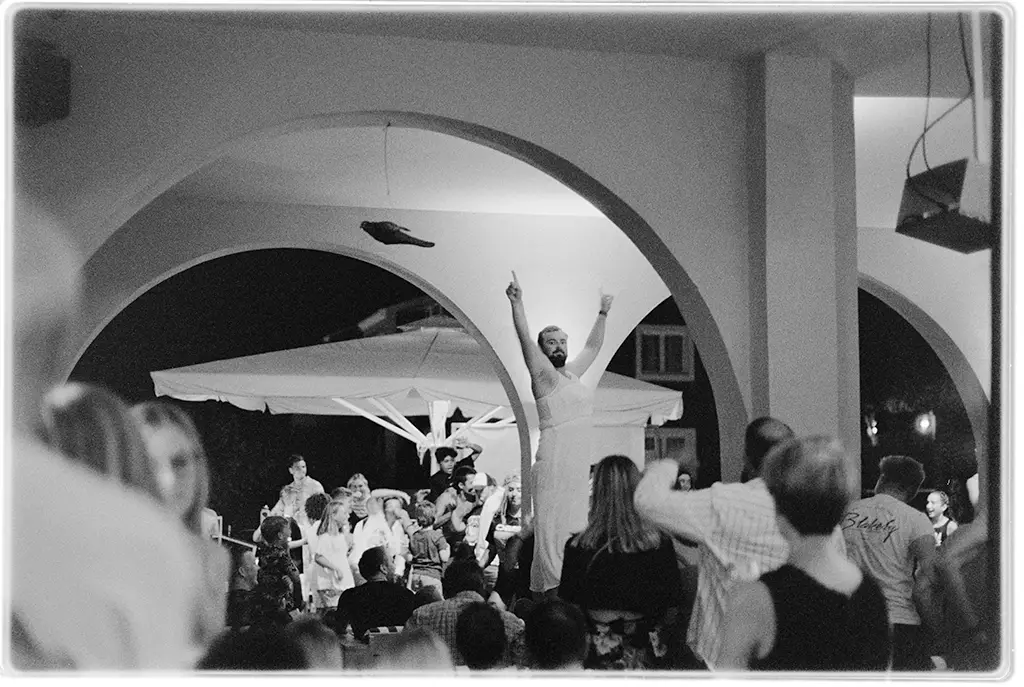
The subject matter varied from children’s parties through holidays and family outings to landscape and pictures taken on my daily dog walks (a genre that has been referred to as ‘path photography’!). Most of the pictures were mediocre, but then most pictures are. At Mike’s recommended rate of making ‘good prints’ (one every five to ten rolls) I should be looking at 9-18 ‘keepers’ from this and I’ll leave it to you to judge if any of the accompanying pictures reach that level. This isn’t really about the quality of the output though, it’s about the benefit of the exercise to the photographer.
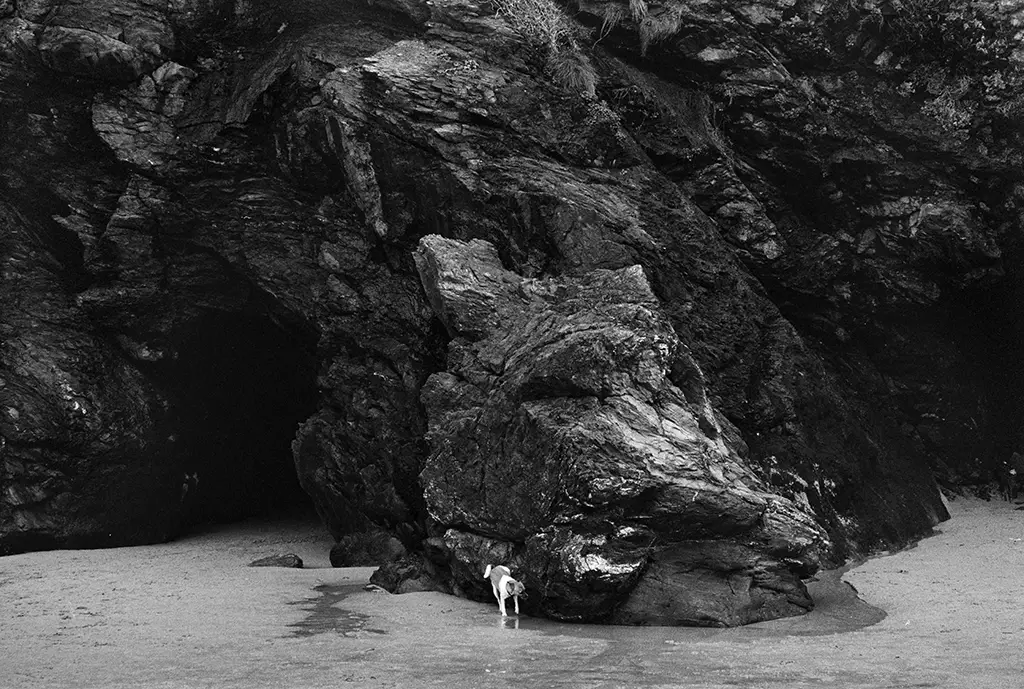
What did I learn?
Am I a better photographer for it? I don’t know is the honest answer. I certainly came to recognise the 50mm view in front of me and got adept at sliding the camera up, focusing and pressing the button almost instinctively. Whether this resulted in better pictures by the end of the year I’m not sure. I’m not by nature a street photographer and where I live (rural west Devon) is perhaps not natural Cartier-Bresson territory. Some of my favourite pictures from the year actually come from the first few rolls, so on that basis perhaps the exercise should be judged a failure. After I finished I underwent a sort of rebound camera purchasing spree (having restrained myself for a year) and also shot a lot of 120 film (perhaps longing for a tonality that 35mm couldn’t give me) so it didn’t empty my camera cupboard to a level of Zen-like simplicity either.
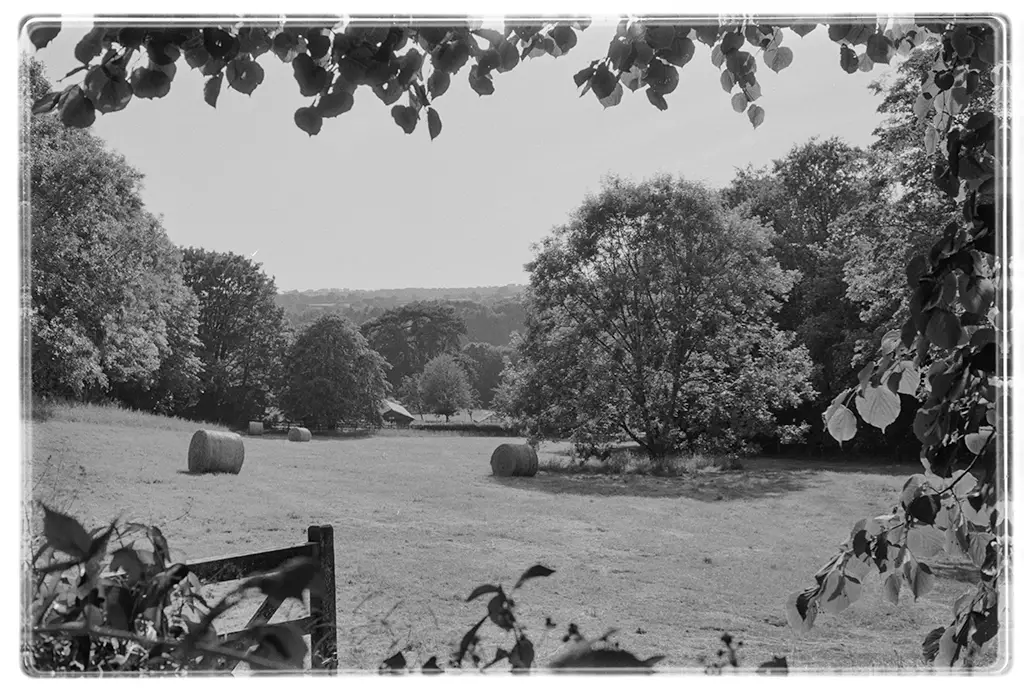
All these objections aside, it does feel good to have a consistent body of work presented in a uniform style and comprising a year of my life. It is more coherent therefore than anything else I’ve done. My desire for simple cameras with direct controls that ‘get out of the way’ has certainly been strengthened by the experience. Above all, the enjoyable feeling of picking up the camera, putting it on like a piece of clothing and walking out of the door without a second thought is one I’m very grateful to have had, even if only for a year.
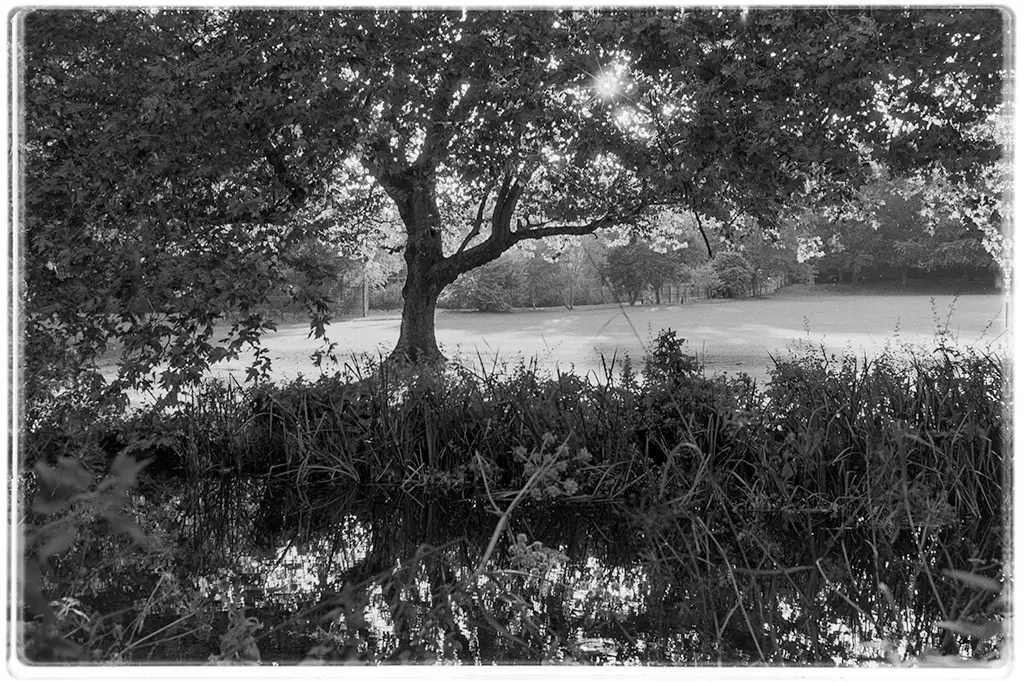
Thank you for your kind attention. You can find me on Instagram or my website.
Share this post:
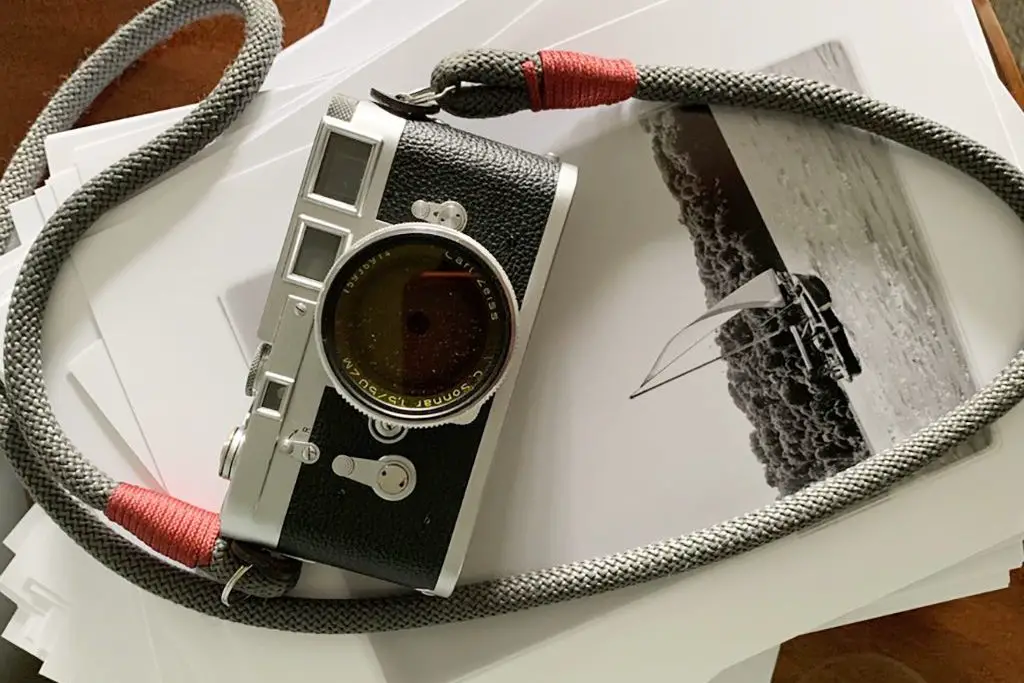








Comments
Kevin Pritchard on The Leica for a Year Project – By Patrick Medd
Comment posted: 22/02/2022
Comment posted: 22/02/2022
Philip Ahlquist on The Leica for a Year Project – By Patrick Medd
Comment posted: 22/02/2022
Comment posted: 22/02/2022
Comment posted: 22/02/2022
Jonathan Leavitt on The Leica for a Year Project – By Patrick Medd
Comment posted: 22/02/2022
Comment posted: 22/02/2022
BW on The Leica for a Year Project – By Patrick Medd
Comment posted: 22/02/2022
Comment posted: 22/02/2022
JAMES LANGMESSER on The Leica for a Year Project – By Patrick Medd
Comment posted: 22/02/2022
Comment posted: 22/02/2022
Comment posted: 22/02/2022
Justin Kingery on The Leica for a Year Project – By Patrick Medd
Comment posted: 22/02/2022
Comment posted: 22/02/2022
Comment posted: 22/02/2022
Comment posted: 22/02/2022
Mike on The Leica for a Year Project – By Patrick Medd
Comment posted: 22/02/2022
Comment posted: 22/02/2022
Jonathan Yuen on The Leica for a Year Project – By Patrick Medd
Comment posted: 22/02/2022
Comment posted: 22/02/2022
Comment posted: 22/02/2022
Jacob Christiansen on The Leica for a Year Project – By Patrick Medd
Comment posted: 22/02/2022
I think I would have chosen a 35mm, but maybe that's the boring/easy choice.
Comment posted: 22/02/2022
Chris on The Leica for a Year Project – By Patrick Medd
Comment posted: 22/02/2022
At the end, I decided that rangefinder lenses were way too expensive to make this my continuing system, so sold all the gear, which it turned out was not exactly "free" (various commissions etc taking a huge chunk of the sale costs). I now regret it, of course, as they have at least doubled in price since then, and for eyesight reasons I would now like to get back to rangefinders again!
But that M-Rokkor 40/2! What a lovely lens that was.
Comment posted: 22/02/2022
Sacha Cloutier on The Leica for a Year Project – By Patrick Medd
Comment posted: 22/02/2022
Comment posted: 22/02/2022
Matthias on The Leica for a Year Project – By Patrick Medd
Comment posted: 22/02/2022
I could never do this (apart from being too poor to buy a Leica). I almost exclusively shoot color. Photography is all about color for me. I love telephoto and macro lenses and the different view on the world they give.
But o.k. I've been shooting from around 1990 (when I first was allowed to you use my parents Minolta X-700) to 2001 only with a MD 1.7/50mm lens, because there were no other (but in color !). So perhaps I'm through this exercise for live...;-) But I'm still not very good in framing.
Comment posted: 22/02/2022
Daniel Fjäll on The Leica for a Year Project – By Patrick Medd
Comment posted: 22/02/2022
Comment posted: 22/02/2022
gil aegerter on The Leica for a Year Project – By Patrick Medd
Comment posted: 22/02/2022
Comment posted: 22/02/2022
Alan on The Leica for a Year Project – By Patrick Medd
Comment posted: 22/02/2022
The tonality of these images is gorgeous too.
Comment posted: 22/02/2022
GARY SMITH on The Leica for a Year Project – By Patrick Medd
Comment posted: 22/02/2022
Comment posted: 22/02/2022
Khürt L Williams on The Leica for a Year Project – By Patrick Medd
Comment posted: 23/02/2022
Mike has a twisted sense of humour.
David Hume on The Leica for a Year Project – By Patrick Medd
Comment posted: 23/02/2022
Comment posted: 23/02/2022
Comment posted: 23/02/2022
Comment posted: 23/02/2022
PK on The Leica for a Year Project – By Patrick Medd
Comment posted: 23/02/2022
Comment posted: 23/02/2022
Neil McGahee on The Leica for a Year Project – By Patrick Medd
Comment posted: 24/02/2022
Paul on The Leica for a Year Project – By Patrick Medd
Comment posted: 03/03/2022
Comment posted: 03/03/2022
Daniel J Castelli on The Leica for a Year Project – By Patrick Medd
Comment posted: 05/03/2022
I just re-read your excellent article and would like to add some comments.
In 1970, I purchased a Pentax H1a and a 50mm f/2.0 Super-Takumar lens. I used that combo until the camera was stolen in 1971. I replaced the Pentax w/a Nikon F and again, a 50mm lens. Over the next 45 years, I used lots of different Nikkor lenses, from primes to zooms. A back injury forced me to seek a lighter load/carry so I sold off the Nikon gear. Tucked in with the Ninon gear was my old Leica M2 w/a 50mm lens. I wondered if I could re-create the years I only worked with a normal lens.
On January 1, 2016, I started a one lens/one camera project. I shot with my M2 and a 50mm f/2.0 Planar. My film stock was HP-5, processed & printed in my home darkroom.
I didn't shoot every day, I probably shot one a week. The situation dictated the output. My nephew's wedding demanded a few rolls, but mostly it was a pic here & there. I stuck to it up to the end of the year.
I learned that I didn't have a 50mm 'eye.' My visual sense gravitated toward a wider view. I like to place my subject within their surroundings. The 35 sometimes gave me too much, but the 50mm lens was too restricting. For a long time now, my prime lens is a 40mm lens, with a aux. viewfinder fitted onto my well-worn M2. I also have a Leitz-Minolta CL as a secondary camera and the native frame lines are for a 40mm lens with additional 50mm frame lines.
The year-long process was not wasted. I didn't lose any critical shots. It was a great learning experience. I still have both a 50mm & 35mm lens, but they are used less frequently, and only when the situation deems it. The 40 is my EDC lens.
So, if people have the time, I'd say try this project. You'll learn so much about you style.
Regards,
Dan
Comment posted: 05/03/2022
Alex Hayes on The Leica for a Year Project – By Patrick Medd
Comment posted: 08/03/2022
Comment posted: 08/03/2022
RichardP on The Leica for a Year Project – By Patrick Medd
Comment posted: 19/03/2022
Nice set, the snaps, that is!
Comment posted: 19/03/2022
Henning Wulff on The Leica for a Year Project – By Patrick Medd
Comment posted: 23/03/2022
I inherited some Leica equipment when I was 17 in 1962, and started carrying the IIIg and 50 Summicron everywhere, including school. I got jobs, went to University, travelled, met my to-be wife (yes dear, I always carry a camera, except to bed and in the bathroom). The camera(s) kept coming along.
Predominantly, I shot B&W and developed it myself. There were some years when I shot less than 3000 frames, but mostly it was more.
Now, I mostly shoot digital, but I still carry a camera, usually a Leica with a 35mm lens everywhere. People say 'if you would put down your camera, you'd actually see what's in front of you', but I believe they've got it wrong. The camera helps my seeing.
Sometimes, for months or years, it'd be just one camera and one lens and one film, but then that would shift and other equipment would get involved. I like the gadget part of photography as well, and for 30 years I worked as an architectural and construction photographer alongside my main profession as architect, so liking gadgets was a helpful interest.
And lastly: yes, TOP sent me.
jason gold on The Leica for a Year Project – By Patrick Medd
Comment posted: 13/05/2022
Do it! I say shoot less though.. film is precious.
Jens on The Leica for a Year Project – By Patrick Medd
Comment posted: 15/12/2022
1 ) When a Minolta, i would take a XG 9 or a X-700. The lens would be a MC W.Rokkor 35mm f2.8 or a MC Rokkor - PF 55mm f1.7.
2 ) When a Contax, i would take the RTS, with a CZJ Tessar 50mm or a CZJ Pancolar 50mm.
3 ) When a Praktica, my choice would be a MTL5, with a Pentacon 29mmf2.8 or a Helios 44-6 58mm.